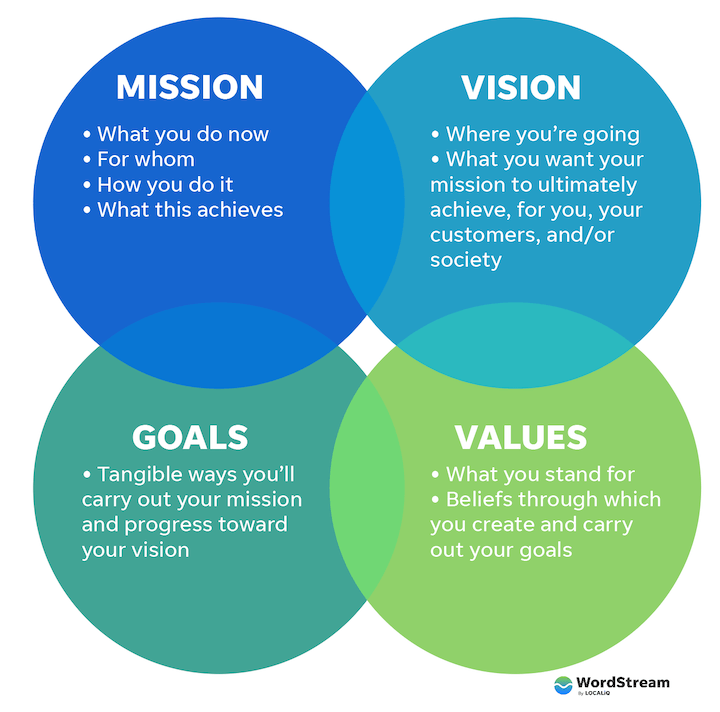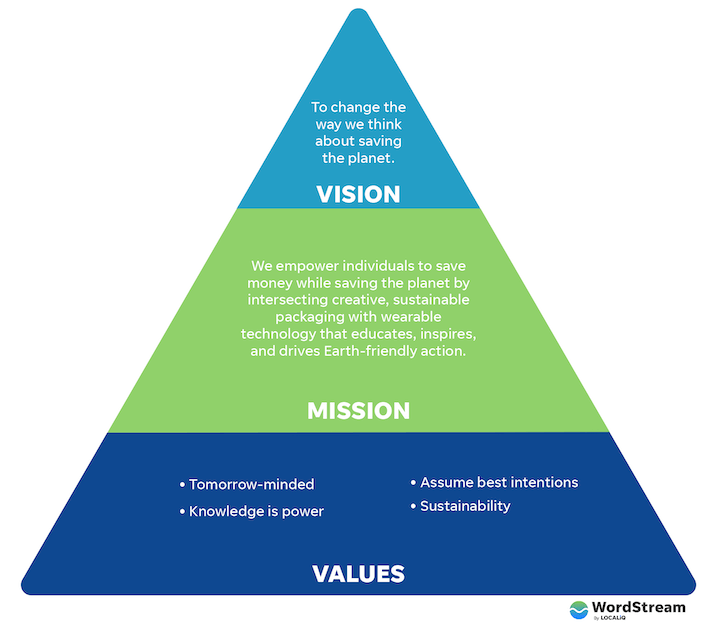Scoprire i segreti per creare dichiarazioni di visione e missione efficaci: una guida di lettura obbligata per le aziende in crescita
Immagine gentilmente concessa da Pixabay via Pexel
Sommario
- Capire la differenza
- Valutare lo stato attuale della tua azienda
- Definire i tuoi valori fondamentali
- Creare una dichiarazione di visione convincente
- Sviluppo di una chiara dichiarazione di intenti
- Rivedere, perfezionare e condividere le dichiarazioni
- Implementazione delle dichiarazioni
- Insomma
Creare un'esperienza avvincente dichiarazione di visione e missione è un passaggio essenziale per definire la direzione della tua azienda. Queste dichiarazioni servono come una luce guida, fornendo chiarezza e scopo alla tua organizzazione. Una dichiarazione di visione ben congegnata delinea le tue aspirazioni future e dove vuoi andare, mentre una dichiarazione di missione definisce i tuoi obiettivi attuali e come intendi raggiungerli.
Capire la differenza
Prima di redigere queste dichiarazioni, è importante comprendere la differenza tra una dichiarazione di visione e una dichiarazione di missione. La dichiarazione di visione si concentra sugli obiettivi e le aspirazioni a lungo termine dell'azienda, dipingendo un quadro stimolante di ciò che si intende raggiungere. Dovrebbe essere concisa e memorabile, e suscitare emozioni ed entusiasmo tra i propri stakeholder.
D'altro canto, la dichiarazione di missione è più radicata nel presente. Delinea lo scopo della tua azienda, i suoi valori fondamentali e le azioni che intraprendi per realizzare la tua visione. Una dichiarazione di missione dovrebbe essere chiara, specifica e attuabile, fornendo una tabella di marcia per le operazioni quotidiane della tua organizzazione.
Valutare lo stato attuale della tua azienda
Prima di stilare una dichiarazione di vision e mission, è fondamentale valutare lo stato attuale della tua azienda. Conduci un'analisi approfondita dei tuoi punti di forza, debolezze, opportunità e minacce (Analisi SWOT). Ciò ti aiuterà a identificare i tuoi punti di forza esclusivi, le potenziali sfide e le tendenze di mercato che potrebbero avere un impatto sulla tua direzione strategica.
Definire i tuoi valori fondamentali
I valori fondamentali sono i principi fondamentali che guidano il comportamento, la cultura e il processo decisionale della tua azienda. Fungono da bussola morale per la tua organizzazione, influenzando le relazioni con dipendenti, clienti e fornitori. Rifletti su ciò che rappresenta la tua azienda e sui valori a cui tieni. Sei impegnato nell'onestà, nell'innovazione o nella sostenibilità? Definisci e dai priorità ai tuoi valori fondamentali, poiché definiranno le fondamenta delle tue dichiarazioni di visione e missione.
Immagine per gentile concessione di www.wordstream.com tramite Google Immagini
Creare una dichiarazione di visione convincente
La tua dichiarazione di visione dovrebbe ispirare e motivare sia i tuoi team interni che gli stakeholder esterni. Dovrebbe essere una rappresentazione concisa delle aspirazioni future della tua azienda. Inizia immaginando dove sarà la tua azienda nei prossimi 5-10 anni. Quale impatto vuoi avere? Per cosa vuoi essere conosciuto? Usa queste domande come punto di partenza per creare una dichiarazione di visione che racchiuda le tue ambizioni.
Mantieni la tua dichiarazione di visione concisa, concentrandoti su ciò che vuoi ottenere. Invece, evita frasi generiche o cliché e punta a un messaggio unico e avvincente. Considera il tono e il linguaggio che risuonano con il tuo pubblico di riferimento. Usa un vividoTrova parole stimolanti per dipingere un quadro di un futuro che entusiasmi i tuoi stakeholder e raccolga sostegno.
Esempi di vision statement ben congegnati da aziende di successo possono ispirare e guidare il processo di stesura. Ad esempio, la vision statement di Tesla, il produttore di auto elettriche, è "creare l'azienda automobilistica più avvincente del 21° secolo guidando la transizione mondiale verso i veicoli elettrici". Questa affermazione cattura la loro ambizione di rivoluzionare l'industria automobilistica e traccia un percorso chiaro per realizzarla.
Sviluppo di una chiara dichiarazione di intenti
Mentre la dichiarazione di visione si concentra sul futuro, la tua dichiarazione di missione radica la tua azienda nel presente. Delinea i tuoi obiettivi attuali, le attività principali e come intendi realizzare la tua visione. A una dichiarazione di intenti ben formulata dovrebbe essere concisa, specifica e attuabile.
Immagine per gentile concessione di www.fiverr.com tramite Google Immagini
Inizia definendo lo scopo della tua azienda. Quale problema intendi risolvere? Come pensi di fare la differenza? Identifica le attività e i servizi principali che ti consentono di realizzare la tua visione. Quindi, distilla queste intuizioni in una chiara dichiarazione di missione che sia in linea con i tuoi valori fondamentali e offra una direzione a tutti gli stakeholder.
Esaminare esempi di dichiarazioni di missione efficaci può fornire spunti preziosi. Ad esempio, Dichiarazione di intenti di Google è "organizzare le informazioni mondiali e renderle universalmente accessibili e utili". Questa affermazione semplice ma potente riflette il loro impegno nel rendere le informazioni accessibili a tutti, guidando le loro attività aziendali principali.
Rivedere, perfezionare e condividere le dichiarazioni
Una volta abbozzate le dichiarazioni di vision e mission, è fondamentale rivederle e perfezionarle. Prenditi del tempo per valutare la chiarezza, l'allineamento con i tuoi valori e l'impatto complessivo delle dichiarazioni. Considera di coinvolgere le principali parti interessate, come dipendenti, dirigenti e membri del consiglio, nel processo di revisione per garantire un contributo e un'adesione collettivi.
Dopo aver finalizzato le dichiarazioni, è il momento di condividerle con i tuoi dipendenti, clienti e parti interessate. Comunicare la visione e la missione attraverso vari canali come riunioni aziendali, newsletter e il tuo sito web. Incoraggia tutti nell'organizzazione a comprendere e abbracciare queste dichiarazioni, poiché guideranno il processo decisionale e creeranno un senso di scopo e direzione.
Implementazione delle dichiarazioni
La stesura di una dichiarazione di vision e mission è solo l'inizio. Per garantirne l'efficacia, queste dichiarazioni dovrebbero essere integrate nel tessuto quotidiano della tua organizzazione. Sottolinea l'importanza di incarnare la visione e la missione nella cultura aziendale, valori e processi decisionali. Rivedi e valuta regolarmente quanto bene la tua organizzazione si allinea a queste dichiarazioni e apporta le modifiche necessarie.
Immagine per gentile concessione di www.wordstream.com tramite Google Immagini
Insomma
Creare una dichiarazione di vision e mission avvincente è un'arte che richiede introspezione, chiarezza e una mentalità lungimirante. Sfruttando queste dichiarazioni, dai alla tua organizzazione una direzione e uno scopo chiari. Quindi, prenditi del tempo per valutare la tua azienda, definire i tuoi valori fondamentali e redigere dichiarazioni di impatto che preparino il terreno per il successo della tua azienda. Sii intenzionale, sii fonte di ispirazione e guarda la tua vision e mission diventare una realtà che spinge la tua attività in avanti.



